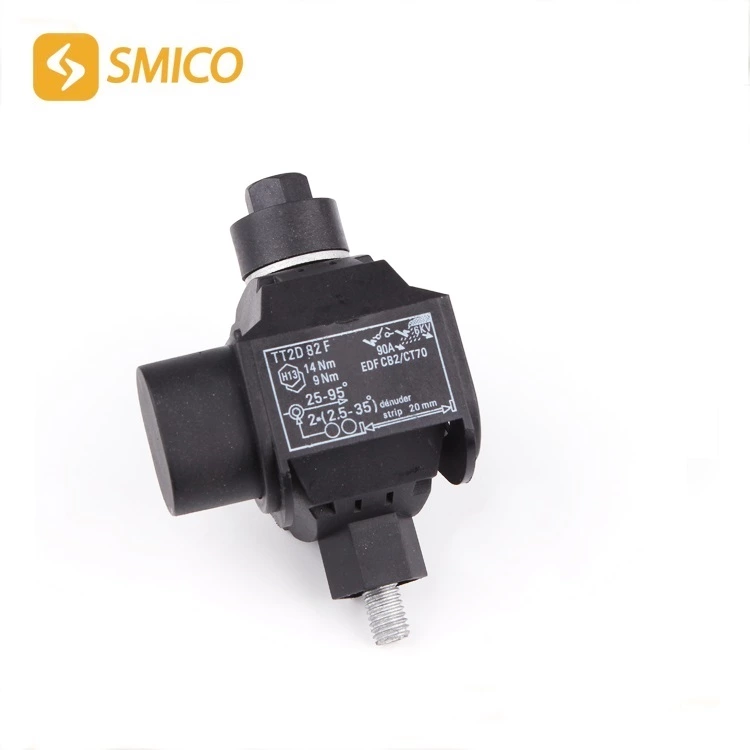Insulation Piercing Connector Corrosion Protection Material Selection Guide!
cable ipc connector As a key interface component of the electronic system, its reliability directly affects the long-term stable operation of the entire equipment. Under complex and changing environmental conditions, corrosion is one of the main causes of connector failure. According to statistics, more than 40% of connector failures are related to corrosion problems.
1. Basic principles for selecting anti-corrosion materials
1. Environmental adaptability principle
Working environment analysis: clarify key parameters such as temperature, humidity, and types of pollutants
Corrosion mechanism identification: distinguish between different types such as chemical corrosion and electrochemical corrosion
Protection level matching: select the appropriate IP protection level according to the IEC 60529 standard
2. Electrical performance matching principle
Contact resistance requirements: ensure that the material combination can maintain a stable low contact resistance
Insulation performance requirements: The dielectric material must meet the insulation requirements under the working voltage
High-frequency characteristics considerations: High-frequency applications need to pay attention to the dielectric constant and loss of the material
3. Mechanical performance coordination principle
Plug-in life matching: The material combination should ensure the specified mechanical durability
Stress relaxation characteristics: Consider contact stability under long-term pressure
Coordination of thermal expansion coefficient: Avoid mechanical stress caused by temperature changes
2. Key component material selection strategy
1. Contact material selection
Precious metal plating series
Gold plating (0.1-0.5μm):
Advantages: Optimal corrosion resistance and conductivity
Applicable to: High reliability requirements, such as aerospace, medical equipment
Cost: Highest, accounting for about 15-25% of the connector cost
Silver plating series
Silver plating (2-5μm):
Advantages: Excellent conductivity and low cost
Disadvantages: Easy to sulfurize and turn black
Improvement: Adding a nickel barrier layer (1-2μm) can improve protection
Tin and tin alloy series
Mist tin/bright tin (3-8μm):
Advantages: Lowest cost, good solderability
Disadvantages: Easy to generate tin whiskers, easy to diffuse at high temperatures
Applicable to: Consumer electronics, operating temperature <105℃
2. Insulator material selection
Engineering plastics
PPS (polyphenylene sulfide):
Temperature resistance: 220℃ continuous working temperature
Chemical resistance: resistant to most acid and alkali solvents
Typical application: automotive engine compartment connector
LCP (liquid crystal polymer):
Dimensional stability: moisture absorption rate <0.02%
Dielectric properties: dielectric constant 3.0 at 1GHz
Applicable: high-frequency thin-wall connector
High-performance plastics
PEI (polyetherimide):
Flame retardant grade: UL94 V-0 (0.4mm)
Mechanical strength: flexural modulus 3.5GPa
Applicable: harsh industrial environment
3. Shell and sealing materials
Metal shell
Aluminum alloy + anodizing:
Oxide layer thickness: 10-25μm
Salt spray resistance: 500-1000 hours
Lightweight: density 2.7g/cm3
Plastic shell
PA66+30%GF:
Environmental adaptability: -40℃~120℃
Protection level: up to IP68
Cost advantage: 30-50% lower than metal shell
Sealing material
Silicone rubber:
Elasticity retention: -55℃~200℃
Weather resistance: excellent anti-UV aging performance
Compression permanent deformation: <20% (150℃×22h)
III. Special environment material solutions
1. Marine environment application
Contact: thick gold plating (0.5μm or more) + nickel barrier layer
Shell: 316L stainless steel + PTFE seal
Protection process: three-proof paint coating (in accordance with MIL-I-46058C)
2. Application in chemical environment
Insulator: PEEK material (optimal chemical resistance)
Seal: FFKM perfluoroether rubber
Surface treatment: chemical nickel plating + PTFE composite coating
3. Application in high temperature environment
Contact: palladium cobalt alloy plating
Insulator: PI (polyimide) injection molding
Shell: titanium alloy or nickel-based alloy
IV. Material combination verification method
1. Accelerated corrosion test
Salt spray test: 96 hours test according to GB/T 2423.17 standard
Mixed gas test: H?S+SO?+NO?+Cl? composite test
Temperature and humidity cycle: 1000 hours test under 85℃/85%RH conditions
2. Electrical performance test
Contact resistance stability: change rate after 1000 plug-ins <10%
Insulation resistance: 500VDC test>1012Ω
Dielectric withstand voltage: 3 times the rated voltage without breakdown
3. Mechanical performance test
Plug-in force curve: change <15% after 5000 cycles
Thermal cycle test: -55℃~125℃ 100 cycles
Vibration test: 20-2000Hz random vibration 3 axes 1 hour each
V. Cost optimization strategy
Graded protection: low-cost materials are used in non-critical parts
Local reinforcement: precious metals are used only in corrosion-prone areas
Process substitution: selective electroplating replaces overall electroplating
Design optimization: reduce the exposure area to reduce corrosion risk
Life balance: match material grade according to product life cycle
VI. Future development trend
Nano coating technology: application of new protective materials such as graphene
Self-healing materials: microencapsulated repair agents automatically repair damage
Intelligent monitoring materials: built-in corrosion sensors for real-time warning
Environmentally friendly protection: green processes such as cyanide-free electroplating and chromium-free passivation
Multi-physics field simulation: computer simulation optimization design of corrosion process
Summary: electrical piercing connector The selection of anti-corrosion materials is a systematic project that requires comprehensive consideration of technical performance, environmental adaptability and economic cost. By scientifically analyzing application scenarios, accurately identifying corrosion risks, rationally selecting material combinations, and cooperating with rigorous verification tests, the reliability of connectors in harsh environments can be significantly improved. With the continuous development of new material technologies, the corrosion resistance of insulation connector will continue to increase, providing more reliable interconnection protection for various electronic devices.

